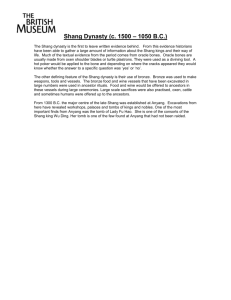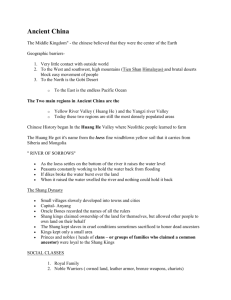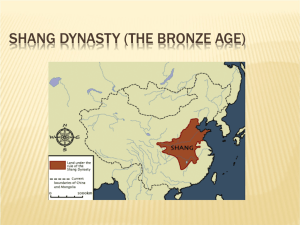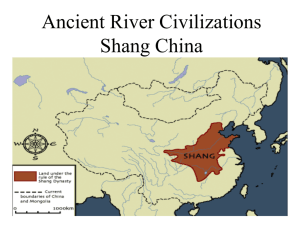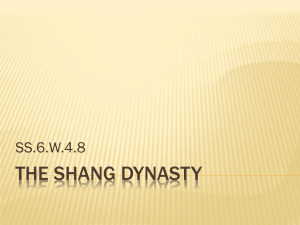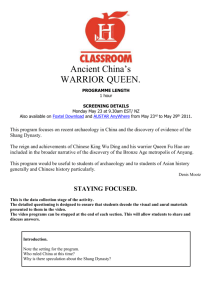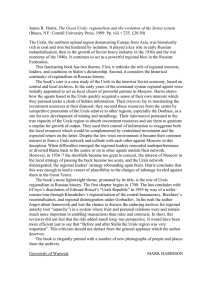The Role of the Transmission of Chariots in the Early East
advertisement
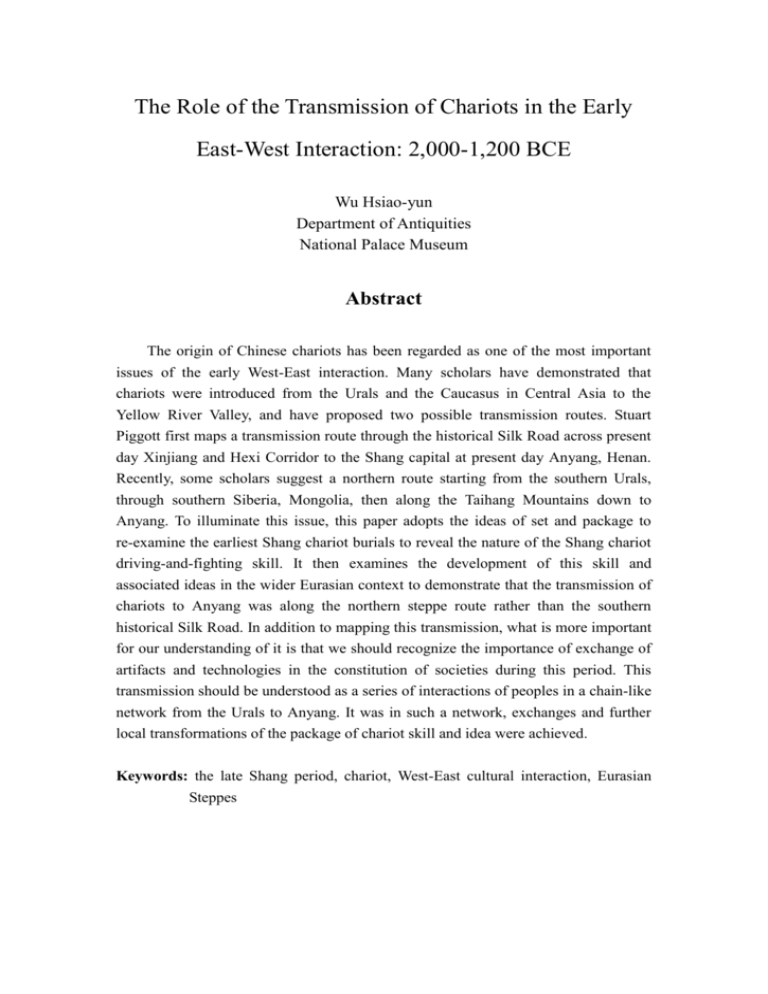
The Role of the Transmission of Chariots in the Early East-West Interaction: 2,000-1,200 BCE Wu Hsiao-yun Department of Antiquities National Palace Museum Abstract The origin of Chinese chariots has been regarded as one of the most important issues of the early West-East interaction. Many scholars have demonstrated that chariots were introduced from the Urals and the Caucasus in Central Asia to the Yellow River Valley, and have proposed two possible transmission routes. Stuart Piggott first maps a transmission route through the historical Silk Road across present day Xinjiang and Hexi Corridor to the Shang capital at present day Anyang, Henan. Recently, some scholars suggest a northern route starting from the southern Urals, through southern Siberia, Mongolia, then along the Taihang Mountains down to Anyang. To illuminate this issue, this paper adopts the ideas of set and package to re-examine the earliest Shang chariot burials to reveal the nature of the Shang chariot driving-and-fighting skill. It then examines the development of this skill and associated ideas in the wider Eurasian context to demonstrate that the transmission of chariots to Anyang was along the northern steppe route rather than the southern historical Silk Road. In addition to mapping this transmission, what is more important for our understanding of it is that we should recognize the importance of exchange of artifacts and technologies in the constitution of societies during this period. This transmission should be understood as a series of interactions of peoples in a chain-like network from the Urals to Anyang. It was in such a network, exchanges and further local transformations of the package of chariot skill and idea were achieved. Keywords: the late Shang period, chariot, West-East cultural interaction, Eurasian Steppes
